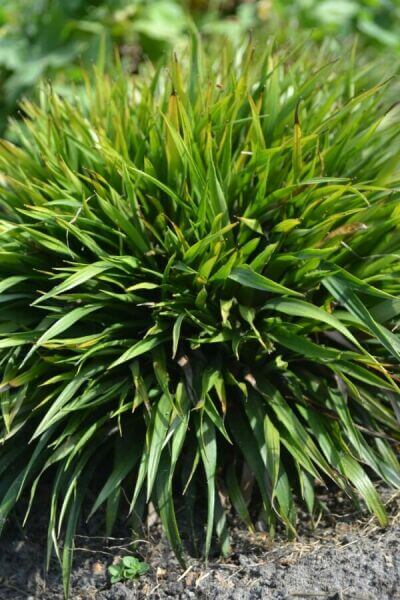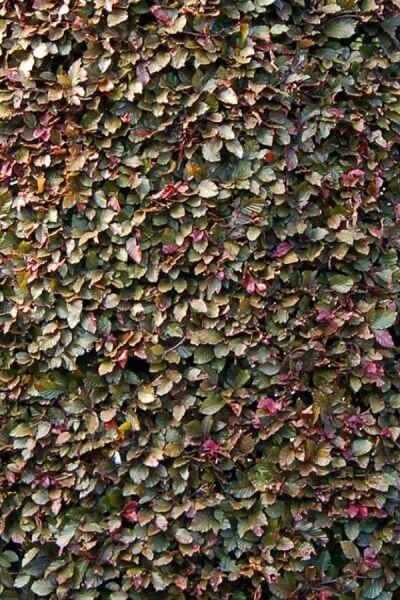Hedge Plants For Summer Blooms
Hedge Plants For Summer Blooms
Blog Article
Best Hedging Plants For Green Dividers
Enhance your garden's appeal with rich hedge varieties such as Yew (Taxus), Thuja, Laurel, Photinia, and Bamboo, commemorated for their structural stability and ecological benefits.
Yew and Thuja supply evergreen coverage and winter season resilience, while Laurel provides rapid growth and broad, aromatic leaves.
Photinia adds seasonal appeal with its lively red foliage, and Bamboo lends a low-maintenance, peaceful atmosphere.
These hedges improve air quality, decrease sound, and develop tranquil, private areas.
Appropriate planting, spacing, and upkeep ensure vigorous development and eco-friendly harmony.
Explore how these rich ranges can raise your garden's beauty and wellness.
Secret Takeaways
Change Your Garden With Lush Hedge Varieties
- Select Yew for its dense, evergreen growth and exceptional durability.
- Opt for Laurel for its fast development and broad leaves, making sure fast privacy.
- Choose Photinia for its vibrant seasonal foliage, which turns a striking dark red.
- Use Bamboo for a low-maintenance, winter-hardy hedge with aesthetic appeal.
- Area plants 2-3 per meter and prune routinely for optimum development and health.
Popular Hedge Plants
When changing a garden with lavish hedge ranges, it's necessary to think about popular hedge plants such as Yew, Thuja, Laurel, and Photinia due to their special attributes and advantages.
Yew (Taxus) is extremely respected for its durability and thick, green development, making it a prime choice for withstanding landscapes.
Thuja is kept in mind for its evergreen foliage and robust winter durability.
Photinia adds seasonal vibrancy with red leaves that darken in time, producing dynamic visual appeal.
Laurel offers rapid development and aromatic, broad leaves, perfect for fast privacy.
In Addition, Bamboo is an excellent option for atmosphere, providing a low-maintenance, winter-hardy choice that enhances the garden's visual with its classy, swaying walking canes.
These choices accommodate a range of horticultural requirements and preferences.
Benefits of Garden Hedges
Garden hedges use a wide variety of advantages, making them an important addition to any landscape. These natural barriers are affordable to implement and supply substantial wind protection, boosting air blood circulation and contributing to sound decrease. The dense foliage of hedges like Thuja and Beech makes sure privacy by obstructing presence, creating a secluded and tranquil environment.
Hedges also play a crucial function in microclimate regulation, supplying a stable environment that cultivates plant growth and decreases temperature variations. Their elaborate leaf structures filter toxins, improving air quality and adding to a healthier garden environment.
Moreover, hedges stand out in noise decrease, absorbing and deflecting acoustic waves to lower ambient noise levels. This dual performance of providing both acoustic and visual privacy improves the total tranquility and visual appeal of any garden.
Planting and Maintenance Tips
For an effective hedge, careful preparation of the planting area is important. Guarantee the soil has correct pH and drainage to support strong root development.
Area the plants properly for the chosen species. Water the hedge regularly throughout its initial growth phase, changing as required with seasonal changes.
Implement a methodical bug control and illness prevention strategy, using chemical or natural treatments when necessary. Regularly examine for aphids, termites, and fungal infections.
Apply mulch to maintain wetness and reduce weeds. Seasonal pruning promotes dense growth and air circulation, important for plant health.
Following these standards will assist you cultivate a lively, well-maintained hedge that enhances the beauty of your garden.
Spacing and Trimming Standards
Spacing and Cutting Guidelines
Correct spacing and cutting are important for cultivating healthy, visually appealing hedges. Adequate spacing makes sure each plant receives enough nutrients, light, and air flow.
Follow these guidelines for ideal hedge maintenance:
- Spacing: Position hedge plants 2-3 plants per meter to motivate robust development.
- Pruning Methods: Regular pruning is important for maintaining preferred hedge height and shape. Cut brand-new growth in summer and cut down older wood during winter season.
- Seasonal Care: Change trimming schedules and methods according to seasonal requirements to ensure plant health.
- Hedge Height: Frequently screen and cut to preserve the wanted hedge height and accomplish uniform looks.
Complying with these steps will guarantee your hedge flourishes, boosting both the appeal and functionality of your garden.
Picking the Right Hedge
Selecting the Right Hedge
Picking the appropriate hedge includes evaluating elements such as fully grown height, foliage density, and environmental resilience. Effective hedge plant choice requires understanding each types' growth qualities and site-specific flexibility.
For example, Yew (Taxus) provides outstanding durability and thick growth, while Thuja is notable for its winter durability. In addition, thinking about upkeep requirements is crucial; fast-growing species like Laurel or Privet demand regular cutting, whereas low-maintenance alternatives like Bamboo or Ivy may be preferable for those seeking minimal upkeep.
Environmental factors such as soil type, light availability, and moisture conditions ought to also direct the selection process. This careful approach ensures the chosen hedges will prosper, supplying both visual and practical advantages to the garden landscape.
Delivery and Planting Recommendations
To guarantee your hedge plants prosper, they must be provided by specialized couriers and planted immediately upon arrival.
Follow these necessary actions for effective planting:
- Soil Preparation: Enrich the soil with raw material to improve drainage and nutrient content.
- Planting Depth: Produce a trench two times the width and equal to the depth of the root ball.
- Watering Methods: Water completely after planting, keeping the soil consistently moist however not filled.
- Mulching: Use a layer of mulch to retain moisture and reduce weeds.
Consumer Support and Service
Given the essential role of timely support in horticultural pursuits, our client assistance group is readily available 6 days a week through telephone, e-mail, and social media to use skilled advice and swiftly deal with any concerns. Their commitment to quick response times guarantees customer complete satisfaction by fixing inquiries associated with plant health, ideal planting techniques, and maintenance schedules.

Schedule
----------------------
Within 24 hours
This comprehensive support system, enhanced by an excellent 9.3/ 10 customer rating, highlights our dedication to enhancing the gardening experience for each client.
Frequently Asked Questions
For How Long Does It Consider Hedge Plants to Develop?
Hedge plants normally need one to 3 years to end up being totally developed, with the specific period differing by species and growing conditions.
Reliable care throughout this critical period is essential for robust growth. Constant watering, watchful weed control, and suitable fertilizer application are critical in promoting strong root development.
For example, fast-growing species like Laurel may develop faster, while slower-growing ranges such as Yew might take longer. Diligent maintenance speeds up the facility process, resulting in thick and healthy hedges.
What Are the very best Hedge Plants for Privacy?
The question of the very best hedge plants for privacy includes examining evergreen and deciduous choices.
Evergreen hedges like Thuja, Laurel, and Cypress offer year-round coverage, making sure constant privacy.
On the other hand, deciduous hedges such as Beech use seasonal privacy, shedding leaves in colder months.
Secret maintenance tips for personal privacy hedges include routine cutting, fertilizing in spring, and proper spacing-- normally 2 to 3 plants per meter.
Furthermore, consistent watering and thorough weed removal are crucial for promoting healthy, thick growth.
Can Hedge Plants Bring In Wildlife to My Garden?
Yes, hedge plants can draw in wildlife to your garden by providing vital benefits like shelter, food, and nesting websites, thereby boosting local biodiversity. For example, yew, holly, and laurel are outstanding for attracting birds, while ivy supports a range of pests.
However, it is essential to note that there are some downsides, such as increased maintenance to manage bugs and regular maintenance. Thoroughly choosing and keeping hedge ranges can assist balance these advantages and drawbacks, ultimately promoting a sustainable and vibrant community in your garden.
Exist Any Flowering Hedge Plants Available?
Yes, there are flowering hedge plants available that can improve the appeal of your garden.
For example, Elaeagnus, also referred to as Olive Willow, produces aromatic white flowers in the fall, including a touch of elegance.
Photinia, another popular option, showcases lively red leaves that mature into a rich green, producing a vibrant visual result throughout the seasons.
To ensure these plants flourish, it's vital to practice correct pruning strategies and seasonal upkeep, such as cutting brand-new development in the summer and cutting back in the winter.
These measures will help preserve the health and visual appeal of your blooming hedges.
How Do I Avoid Bugs in My Hedge Plants?
To avoid bugs in hedge plants, use natural bug control approaches and keep correct hedge care. Present useful pests like ladybugs, which prey on hazardous pests, to create a well balanced ecosystem.
Regularly inspect your hedges for indications of problem and immediately eliminate any affected parts to avoid the spread. Make sure the health of your hedges by applying balanced fertilizers and supplying sufficient water.
Utilize mulching to maintain soil wetness and proper spacing to lower plant tension and promote robust growth. These practices jointly help in minimizing bug problems and keeping a healthy hedge.
Conclusion
In essence, selecting the best hedge varieties such as Yew, Thuja, and Laurel can change any garden into a relaxing haven. These plants get more info provide year-round plant, improve aesthetic appeal, and deal practical benefits like sound reduction and wind defense.
Appropriate planting techniques, precise spacing, consistent watering, and seasonal cutting are crucial for optimal development.
Trusted shipment services and expert consumer support make sure a seamless experience from purchase to planting, making it easier than ever to elevate your outside space.
Garden hedges offer a wide variety of benefits, making them an important addition to any landscape. These natural barriers are affordable to carry out and provide substantial wind protection, improving air circulation and contributing to sound decrease. The dense foliage of hedges like Thuja and Beech makes sure privacy by blocking presence, producing a tranquil and secluded environment.

Pruning Methods: Regular pruning is essential for keeping preferred hedge height and shape. Trim brand-new growth in summer and cut back older wood throughout winter.
Report this page